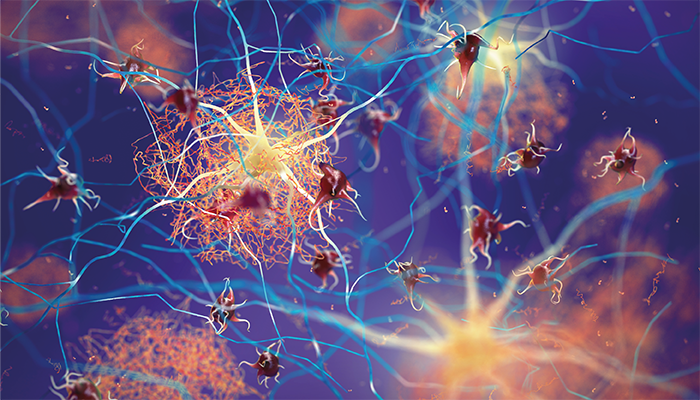
Credit: Adobe Stock
A recent study in Cell Reports highlights the diagnostic potential of phosphorylated tau (p-tau) in Alzheimer’s disease (AD) as well as its role in defending against herpes simplex virus-1 (HSV-1). Researchers from the University of Pittsburgh and Hebrew University of Jerusalem employed advanced imaging techniques and in vitro models to investigate the interactions between p-tau and HSV-1, highlighting implications for innate immune responses in neurodegenerative diseases.
HSV-1 DNA and proteins were detected in human brain samples from AD patients – establishing a direct HSV-1 and p-tau link. Mass spectrometry and western blotting correlated increased levels of viral proteins (including ICP27) with disease severity.
Additionally, the researchers found that, in iPSC-derived brain organoids, HSV-1 infection activates the cGAS-STING-TBK1 pathway, leading to tau phosphorylation. Moreover, p-tau reduced viral protein expression and decreased neuronal death from 64 percent to 7 percent.
This study positions p-tau as both a diagnostic marker and a key player in neuronal defense against HSV-1. Diagnostic tools leveraging p-tau levels and colocalization with viral proteins could enhance early detection and disease monitoring.
Finally, the research points to an interesting therapeutic angle; could targeting the cGAS-STING-TBK1 pathway harness p-tau’s protective mechanisms while mitigating its long-term pathological effects?




